Generally I like to go my own way and write about whatever excites me at any given moment. I find myself in a privileged and lucky position where I don’t ever have to write about wines I don’t like. This enables me to write in a positive way. This is how I distinguish myself from the “wine critic” whose reviews and articles are of necessity (I suppose) peppered with, well, criticism. But occasionally something strikes a chord, something which requires too many characters for a bit of a Twitter rant.
I read the article Jamie Goode wrote on the Little Wine site yesterday, about the grey market in natural wines. It reminded me how, among a group of people who enjoy wine with warmth, hospitality and generosity, there are still those for whom making a buck is the goal.
What is this grey market? Most producers, whether natural or not, have importers for overseas territories, and those importers usually gain an exclusivity in return for the investment they put into promoting those wines. The grey market is where rare wines turn up somewhere else, from an unknown source, at a price way beyond what the producer charged the agent/importer. It means in effect that a middle man takes significantly more profit than the producer, way more than the margin the official importer would charge. The result is that the wines in question, rare to begin with, become well beyond the means of the ordinary consumer.
Let’s go back many years. When I began falling in love with wine it was, as with so many of us, Bordeaux that was my first discovery. It was just before the Parker effect saw prices rocket skywards. But it didn’t take long for me to move on to experience the delights of Burgundy, both red and white. So much so, in fact, that for a period I used to spend a week in Burgundy every year. It wasn’t just the wines, you see, it was the place, the food, the people, the whole ambience adding to the experience of the wine. Over time, however, these wines became ever more expensive as well. There was clearly a point, as in fact had happened with Bordeaux, where I was slipping down the hierarchy in what I could afford to buy (“village” instead of Premier Cru, mostly). This only became a problem when the wines I could afford became equally impossible to source.
Perhaps by coincidence it was around this time that I discovered “natural wines”, but I found that I’d actually been drinking them for years without knowing it. One day in the late 1980s, whilst staying in Burgundy, we made a day trip to Arbois. I’m not the first, and certainly not the last, to fall in love with that town, and over time with her unusual wines as well. A week on the Côte d’Or soon bacame replaced with a week in Arbois, after all only an hour’s drive from Beaune.
With a passion for seeking out the more obscure wines of the world, Jura was a perfect place to bury my heart. I was also lucky enough to get in there before the region became fashionable. These days it is only old Parisian friends who tease us mercilessly for drinking Jura wines. The rest of the world has a voracious appetite for them, and I only marvel that we can still find somewhere to stay (famous last words) in a region still under developed for tourists.
It was around the turn of the century when I first began to notice something was happening with so-called natural wines, and with some Jura wines especially. It was in the natural wine bars of Paris where the secret, under the table, wine list first developed, but it soon moved over to London (and one or two other capital cities, you know who you are). The star wines and their producers, wines freely available at one time, were all of a sudden becoming hidden from view.
Go to any bar, restaurant, or retailer selling natural wines and there would be a wonderful array of bottles to choose from, increasing all the time. Yet there were also a small group of wines which almost overnight disappeared. These became known as the unicorns. It was the result of certain producers being hyped to cult status, seemingly a reflection of the Jayer-Coche Dury syndrome in Burgundy.
The idea of the unicorn wine was truly enhanced when in 2004 we saw the first publication (at first only in Japanese, then in French, a partial English translation of the series only coming out in 2011) of the Manga “The Drops of God”, by Tadashi Agi and Shu Okimoto. This is the story of the pursuit of a series of legendary wines which gripped Japan and is undoubtedly another reason why some of our unicorns are so difficult to find. Japan has both an obsessive and a highly developed taste for natural wines, with a highly wine-educated market segment. Not every Western wine lover knows that.
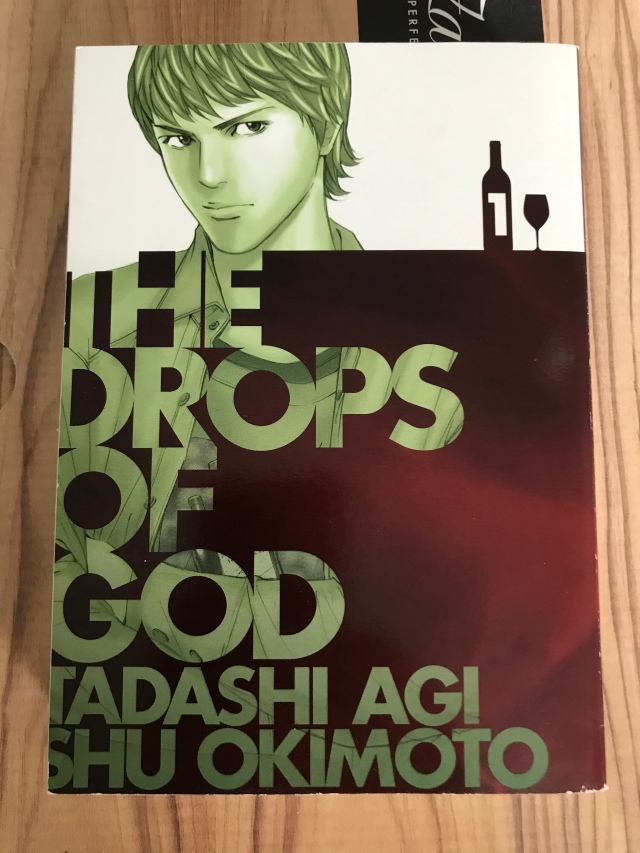
Such wines never disappeared completely, they only moved under the counter. Their availability to normal mortals was cut off. Word went out that some places had secret lists never given to tourists or casual customers. To access them required loyalty. “Wines for mates” as the saying went. I’ve been a beneficiary of such practices on occasion, sometimes because they know I will write about it, but equally I’ve been given an emphatic “no” when asking about the connoisseur’s list (or whatever they choose to call it) which I know full well exists. I’ve also heard the firm request “no photos please” on more than one occasion, which in return for an occasional act of generosity is perhaps understandable. Such lists can get stripped by a plague of locust-like natural wine fans in under a week..
It may be perfectly natural when wines are made in tiny quantities that people who have a prized allocation wish to decide who gets to drink them. We all have to find ways to snaffle a single precious bottle here, or a couple there, and count ourselves luckier than most if we do. Yet one can’t help feeling that the openness and warmth one experiences when visiting the greatest natural wine producers, people who have usually chosen a lifestyle and a way of living over the wealth and materialism chosen by some others, is getting somewhat lost as their wonderful creations come onto the market.
I would say that the three producers most associated with this idea of unicorn wines are all from France’s Jura Region: Jean-François Ganevat, Pierre Overnoy/Manu Houillon and Kenjiro Kagami (Domaine des Miroirs). Pierre Overnoy’s work is being continued by Emmanuel Houillon, under Pierre’s retired but watchful eye, but the wines are made exactly the same as ever. Along with Jacques Puffeney (now retired since 2014, but whose wines have never, surprisingly, achieved quite the same unicorn status as Overnoy), these two winemakers, both just outside Arbois at Pupillin and Montigny-les-Arsures respectively, were the first of the great old timers whose natural wine philosophy became acknowledged in the Jura. Their influences, in part deriving from the work of the parents of the French natural wine movement in Beaujolais (The “Gang of Four”, or should it be five?) led them to Pope-like status in the region.
Overnoy and Puffeney – These days I probably do drink one Overnoy to three Puffeney
Further south, in the part of the Jura known as the Sud Revermont, when I became interested in Jura wine the domaine of choice was Labet. Alain and Josie were truly the unsung heroes of this southern part of the region. Their wines have a higher profile today, since their children have ably taken over the domaine, but they seem only now to be achieving the cult status they objectively deserve. The unicorns down here go under different names – Ganevat and Miroirs.
Labet, both old and new
Jean-François Ganevat makes an almost uncountable number of wines, many being exciting blends under a negociant label (and the labels themselves can be pretty wild too). The wines which are harder to source are the domaine wines, with their easily recognisable yellow labels depicting a drawn view of the vines sloping steeply down, below Château-Chalon, some distance to the north of the Ganevat domaine near Rotalier. Ganevat at least makes a reasonable number of domaine wines and they are perhaps not as difficult to source as some suggest, especially in France. In the UK their agent is Les Caves de Pyrene, which takes the same margin as any other wine they sell, although they could doubtless sell their allocation several times over. They seem to spread the love around restaurants/wine bars and independent retailers in fairly equal measure. If they don’t have innumerable bottles open at their tastings it’s hardly surprising.
Some Ganevat Domaine wines
Domaine des Miroirs is a difficult one to ponder, a different matter entirely. This small (between three and four hectares) domaine at Grusse, very close to Ganevat, was set up by a Japanese winemaker only in 2011. Kenjiro Kagami and his wife had previously been mentored by Thierry Allemand and Bruno Schueller. My first introduction to them was also in 2011 in Étienne Davodeau’s BD “The Initiates”, a fleeting reference to “a young intrepid Japanese couple, enamoured with a magical terroir, who have also come to launch into the adventure of wine”. I was suitably intrigued.
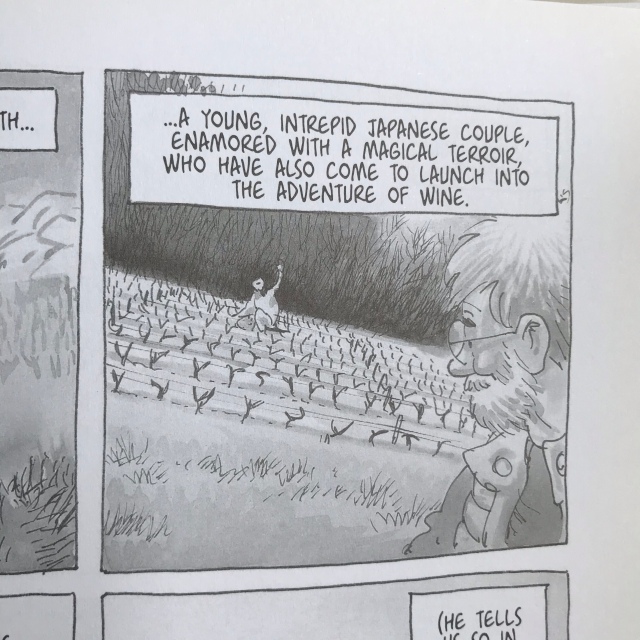
A shot from “The Initiates” by Étienne Davodeau (ComicsLit 2011, trans Joe Johnson)
Miroirs, with its now iconic pale blue label, came out of nowhere. I’d like to say that the wines are amazing, and indeed they are, but only on the evidence of about three bottles which have passed my lips. I pride myself in having my finger on the pulse, at least as far as Jura goes, but I was a bit slow here, it must be said. I have never been able to purchase a bottle of any of Kenjiro’s cuvées myself, relying instead on the generosity of others. I can’t think of one other producer I would be forced to say that of.
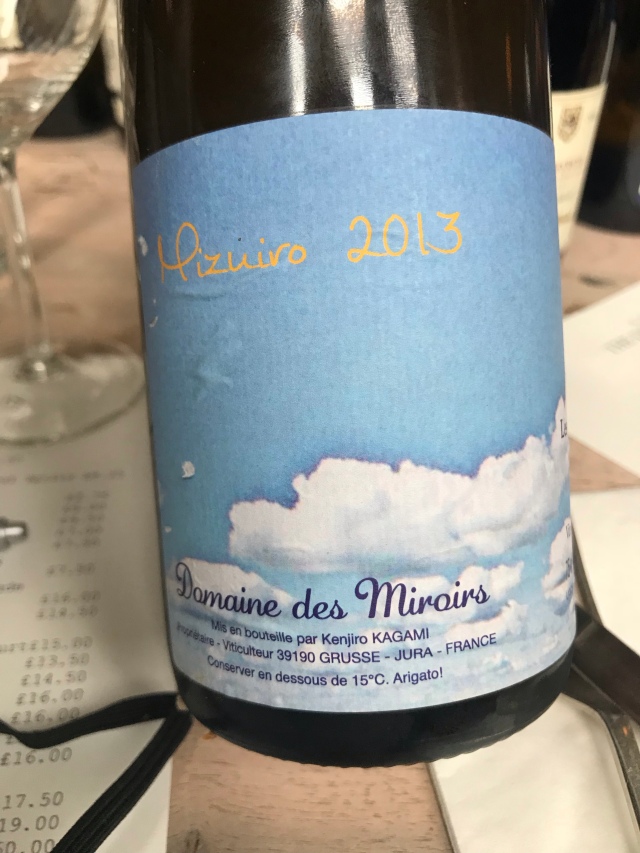
As these wines became rare, then they began to crop up in all sorts of places. Jamie mentions in his article how one of England’s most traditional purveyors of fine wine has sourced some kind of allocation of Domaine des Miroirs, and another has snaffled some of one of Ganevat’s most iconic wines, Les Vignes de Mon Père. UK Agent Les Caves confirmed that those particular bottles didn’t come from them. It is amazing how many people seem to advertise that they have some Miroirs to sell. It’s not a question of not being able to find any if you look hard enough. The problem is (almost) always price.
In that same article Jamie mentions the similarities with the art market, where an artist’s work sells for vastly more at auction once the artist becomes famous, and it is the first purchaser who benefits. However, there is a nuance here. It’s called the “Artist’s Resale Right”, whereby if a work is sold at auction or resold by a dealer, then the artist is entitled to a royalty (on a sliding scale dependent on value). So whilst the seller makes most profit from their investment, the artists (and indeed their heirs for 70 years after their death) get some benefit at least.
In the grey market for wine there is someone with an allocation selling the wine on at a profit to another seller, so the price gets bumped up massively. You will easily find wines with a usual retail value of £30 going for £80, or a £50 wine advertised at £100-£120. Such “gouging” (as we like to call it) sticks in the throat mostly because the original winemaker in the natural wine world is almost certainly far removed in philosophy to the emotionless capitalist who ends up with the lion’s share. Even worse, when I visit and talk to winemakers about this issue they are without exception very sad indeed. They make wine to be enjoyed by people who love them, not those who buy them to “collect” or hide away, and who can do so on account of their somewhat fatter wallet.
Blast Vintners is often a good secret source for all sorts of tiny parcels of interesting and hard to find wines. They are categorically, I want to stress, not of the gouging type (though I have no knowledge of how they manage to secure their parcels). In a piece I read a while ago by Joe Gilmour on the Blast web site he comments that every bottle of Miroirs drunk has to be accompanied by a photo on social media to prove it. He asks if he’s being too cynical about those who worship at the altar of Miroirs? Well, aside from those perhaps tempted to keep an empty bottle to wheel out every year for Instagram, I will say that when I see someone I follow posting one I rejoice. Here, at least, is someone I know appreciates the wine actually drinking it.
Is there an answer, first to the trait of hiding the wines away for “mates”, and second for the phenomenon of the grey marketeers? In the first case I’d just appeal to those who do this to try to be as generous as those who make the wine, and do as the winemakers would wish – allow the wines to reach a wider audience. I can’t say more than this. As for the grey market, well I won’t go there, as a matter of principle. Others doubtless will. One thing I know for sure, with natural wine where there’s a grey market consumers suffer in the long run. Wink Lorch was only recently reminding everyone on a lockdown live Insta how Jura producers are becoming less keen to export. They can sell all they make locally in many cases and so why would they allow others to profit from their work. The actions of a few without doubt affect the rest of us.
I won’t go there in part because the cliché that there are plenty more fish in the sea rings true. Do I regret the drying-up of the availability of wines from Overnoy, Ganevat and Kagami? Well yes. I used to be able to buy Overnoy off the shelf at Wholefoods Market on Kensington High Street, a glorified supermarket no less. In the past two years I’ve secured just two bottles from this producer. I can still get hold of Ganevat, partly because I know a caviste in France he’s mates with, and who gets enough to put it on the shelf. I also have a great relationship with a UK wine shop which will usually (they sometimes forget) let me know when their allocation from Les Caves de Pyrene is due to arrive.
Being a natural wine obsessive does allow me to find out about the good stuff before many, and exploring Jura does usually keep me one step ahead. When everyone was bowing to Ganevat I was happy to snap up the Labet wines, as well as getting to know those of Peggy Buranfosse, another Southern Jura producer from the same hamlet as Ganevat, whose lovely bottles remain virtually unknown even today. The Jura region has certainly a couple of dozen domaines which make wines worthy of worship (if worship it has to be), and it is strange how just a few catch the ear of the collectors. So I would say that whilst Kagami is good, he’s by no means alone.
There is one producer, unquestionably making several world class wines, who for some strange reason has not become unattainable. This is Stéphane (and Bénédicte) Tissot, at Domaine A&M Tissot. Again, I got to know André and Mireille when we used to stay up the road in the mid-1990s, and we met Stéphane as a young man of whom they were justifiably proud of what he might achieve. Perhaps Stéphane’s top wine is “Le Clos”, a Chardonnay from his terraced vineyard beneath the Tour de Curon, which he has faithfully restored. It is a Chardonnay comparable to any fine white Burgundy (if you will just allow it to age). Great as this wine is, and fairly priced, it does sell out but if you visit the Tissot shop in the centre of Arbois at the right time of year you will certainly be able to purchase a bottle or two.
If my sadness at the greed or meanness of some people is somewhat tempered by the availability of other stars, or future stars, making wines to buy now before the collectors cotton on, where does one look? Well if I’m very specific I would only be fuelling the race, and perhaps this isn’t quite the right place to do so.
Jura is still a region brimming with genius and there are producers there, some well established and others almost starting out on their journey, who are making wines as exciting as any. Ironically, because Wink Lorch has written books on both regions, there are a few Savoie producers who are also heading towards so-called unicorn status. If the wines of Prieuré-St-Christophe from the era of now retired Michel Grisard (the “Overnoy” of the Alps) are already unicorns, then Dominique Belluard, Les Vignes de Paradis (Dominique Lucas, especially “Kheops” made in a concrete pyramid) and Jean-Yves Péron are headed that way. Plenty of Loire names are already there, but for some strange reason the Loire hasn’t quite reached the collector market and remains relatively open to genuine enthusiasts. One or two Beaujolais producers fit the bill, yet that region remains remarkably accessible.
Lucas, Péron and Belluard
Switzerland lags way behind France, but there are a small number of producers there whose wines are achieving unicorn status. For a host of reasons we probably all know, Swiss wines (which is on my list for another article soon, I should add) are expensive to begin with, so I hate to imagine what the grey market could do for these. Daniel Gantenbein is already there in this respect, but his prices rocketed above the £50/bottle mark many years ago, leaving me sadly behind. There are certainly at least a couple of Swiss natural wine producers (spot them below) which are headed in the same direction, but whose wines are thankfully available openly in the UK…for now.
Germany still remains pretty unexplored by all but the true believers, much more so than Austria, where Burgenland especially, and to a lesser extent Styria, is transforming some wonderful producers to cult status. Spain has a few who may be going that way, yet so far remain known by just a few. Italy, especially in the Northeast, is a major hotbed for the natural wine cult, especially in the various sub-regions of Friuli.
A few more cult wines for your annoyance
As always, the thing is not to get too fixated on labels. If you absolutely have to drink (or collect) a specific label, and if you are willing to pay for the privilege, then you will probably be able to do so. If you are like me, then just move on. I enjoyed trying Selosse decades ago, but the fact that I may never be able to afford another bottle is probably mitigated by the few vignerons, some of whom are so-called disciples of Anselme, whose wines I can buy for around a third of the price of his entry level. If wine is about pleasure for you, you will take satisfaction from the fact that you can almost always get 80-to-90% of the pleasure for 30-to-40% of the price.
As for the fifty shades of the shady grey market, don’t be tempted. There’s more pleasure to be had in trying to keep ahead of the “greedheads” (cf Lord Buckley, Supermarket, 1959), finding the next unicorns before they do. It’s not that hard. I will leave you with one final tip though…Sassy Alsace!
* The original article by Jamie Goode, “The Grey Market Creeps Into Natural Wine”, can be found on the Little Wine web site – follow the link HERE. It makes essential reading.
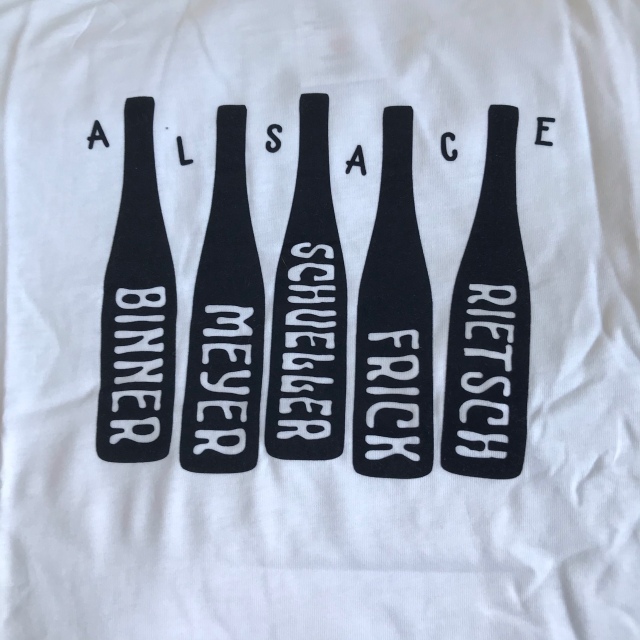
T-shirt by Vindalwine (www.vindal.vin/), see @vindalwine on Instagram
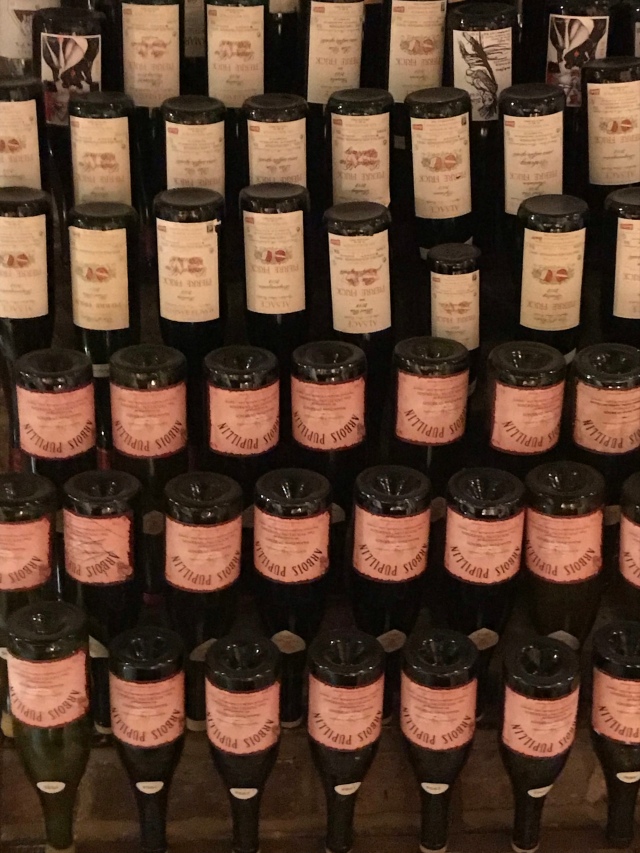
Cult in the crypt – downstairs at a certain London wine bar…that is rather a lot of Overnoy!
























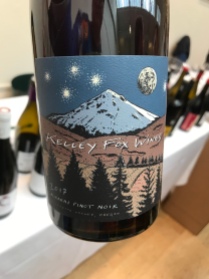

It’s a sad, yet fascinating, series of events. For what it’s worth I recall my only Miroirs wines as amongst the most memorable I have had in many years. I have sought them out here and in France without luck. The growth of the natural wine movement made this likely to occur at some point. It isn’t what producers would want I am sure but it is beyond their power. It genuinely saddens me but then so did the rise in prices in Burgundy, putting wines which had fleetingly been within my reach well beyond them.
The only thing I cling to is that with the number of new producers emerging there will be stars to be discovered as you point out. One young Faugeres producer whom I was fortunate to get to know early, is now finding her wines being sold on at big prices. So, keep looking for the next big things, they are out there.
LikeLiked by 1 person
David,
Another tour de force, font of context, insight, valuable caution and lively exhortation!
I appreciate your focus on market machinations as much as your excellent summary of the singular figures in Jura wine, nod to the Swiss, Germans and Austrians. Just this week I believe I encountered my first grey market German natural wine here in New York. Let us hope the sincerity and directness of our connection with these small producers we value so highly remains accessible and enjoyable for all!
LikeLiked by 1 person
Thank you so much Valerie. Yes, let us hope.
LikeLike
It is very frustrating when the bandwagon jumpers catch up. My source for Labet has dried up & zips yet to track down an alternative. In contrast, an occasional (correctly priced) Ganevat appears. Fortunately, Tissot ((S&B) & Macle are intermittently available along with a couple of ‘lesser’ producers.
My solution has been to start exploring the wines from Savoie, with Wink’s latest book to hand.
LikeLiked by 1 person
Simon has a few decent Savoie. I’m a long standing fan of Dominique Belluard, which for some reason he doesn’t sell. But then he does have Ganevat quite often. Also he often has Domaine St Pierre from just outside Arbois, whose wines I like more and more.
LikeLike
My ‘go to’ Savoie producer: Ardoisières.
LikeLiked by 1 person
Good choice indeed.
LikeLike
This write-up got me quite excited about the Kheops so I decided to pick up a bottle of the 2018 as it was not too expensive (way cheaper than Ganevat’s domaine wines!). To my great surprise the wine does not have a CellarTracker entry and I could not locate one single tasting note anywhere around the Internets. While I bought the wine for drinking rather than keeping I would really like to know a bit more about it. Is long decanting needed, what type of food it is best suited for (14% – I suppose the richer fare?), will it benefit significantly if I wait a year or two etc. Any chance you might be able to help me out?
LikeLiked by 1 person
I would say it will age well, but there is no harm in drinking now. My advice would be to give it air. I would use a carafe (or decanter) but also allow it to breathe in the glass. Don’t serve it too chilled. Some say cellar temperature but I like to start these type of wines a little cooler than that and allow them to warm as we drink. As to food, it’s not like a lot of Chardonnay wines but something reasonably robust. BUT the key is maybe let the wine shine. Don’t drown it with complexity, over rich sauce or spice. Does this help?
LikeLike
Very useful, thanks! Can’t wait to get the bottle in my hands and give a it a go. Although somehow I have a feeling that this could be one of those wines that I will never see offered again as there is a decent amount of buzz and the annual production is around 700 bottles(?). If that’s the case I am happy to be able to try it once at least.
LikeLike
Yes, very tiny production for this cuvée, so not easy to find (in U.K.), but not impossible (via Les Caves de Pyrène here). I hope you enjoy it.
LikeLike